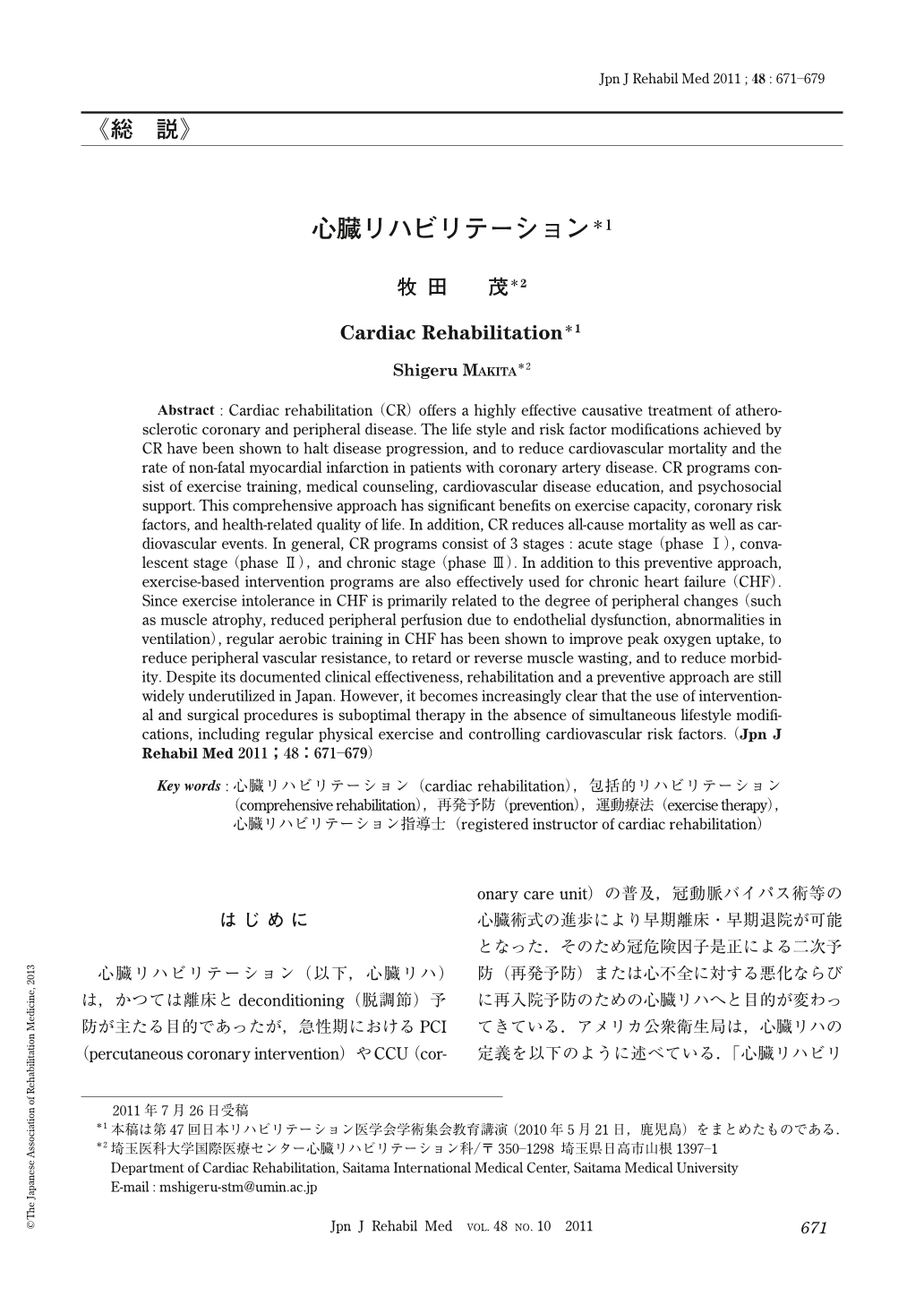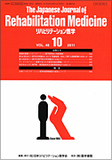Japanese
English
- 販売していません
- Abstract 文献概要
- 1ページ目 Look Inside
- 参考文献 Reference
はじめに
心臓リハビリテーション(以下,心臓リハ)は,かつては離床とdeconditioning(脱調節)予防が主たる目的であったが,急性期におけるPCI(percutaneous coronary intervention)やCCU(coronary care unit)の普及,冠動脈バイパス術等の心臓術式の進歩により早期離床・早期退院が可能となった.そのため冠危険因子是正による二次予防(再発予防)または心不全に対する悪化ならびに再入院予防のための心臓リハへと目的が変わってきている.アメリカ公衆衛生局は,心臓リハの定義を以下のように述べている.「心臓リハビリテーションサービスは,医学的な評価,処方された運動,危険因子の改善,教育とカウンセリングを含む包括的かつ長期的なプログラムである.これらのプログラムは,心臓病の生理学的心理学的影響を抑制し,突然死や再梗塞のリスクを軽減し,心疾患に伴う症状をコントロールし,動脈硬化の過程を安定もしくは退縮させ,対象とされる患者に対して心理社会的,職業的状態を高めるように計画されたものである.」としている1).このように考えると,心臓リハは単に運動療法のみを示すものではなく,患者教育,食事療法や禁煙指導を含めた包括的(comprehensive)リハを目指すべきであると考える.この目的を達成するためには,医療専門職同士が多職種チーム(multidisciplinary team)を形成して対処していかねばならない.さらに,患者のセルフコントロール支援のためには長期的な関与が求められている.したがって,急性期や回復期のみならず,維持期に及ぶ病診連携を含めた心臓リハシステムの構築が必要である(図1).
Abstract : Cardiac rehabilitation (CR) offers a highly effective causative treatment of atherosclerotic coronary and peripheral disease. The life style and risk factor modifications achieved by CR have been shown to halt disease progression, and to reduce cardiovascular mortality and the rate of non-fatal myocardial infarction in patients with coronary artery disease. CR programs consist of exercise training, medical counseling, cardiovascular disease education, and psychosocial support. This comprehensive approach has significant benefits on exercise capacity, coronary risk factors, and health-related quality of life. In addition, CR reduces all-cause mortality as well as cardiovascular events. In general, CR programs consist of 3 stages : acute stage (phase Ⅰ), convalescent stage (phase Ⅱ), and chronic stage (phase Ⅲ). In addition to this preventive approach, exercise-based intervention programs are also effectively used for chronic heart failure (CHF). Since exercise intolerance in CHF is primarily related to the degree of peripheral changes (such as muscle atrophy, reduced peripheral perfusion due to endothelial dysfunction, abnormalities in ventilation), regular aerobic training in CHF has been shown to improve peak oxygen uptake, to reduce peripheral vascular resistance, to retard or reverse muscle wasting, and to reduce morbidity. Despite its documented clinical effectiveness, rehabilitation and a preventive approach are still widely underutilized in Japan. However, it becomes increasingly clear that the use of interventional and surgical procedures is suboptimal therapy in the absence of simultaneous lifestyle modifications, including regular physical exercise and controlling cardiovascular risk factors.

Copyright © 2011, The Japanese Association of Rehabilitation Medicine. All rights reserved.


